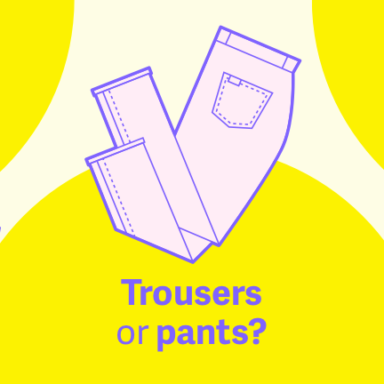Does the fold still matter? Everything you know is wrong
First things first: what is the fold?
The ‘above the fold’ concept came from broadsheet newspaper editors. They would put all the most eye-catching stories and headlines on the visible folded portion of the paper, enticing customers to read more.
Web design adopted this idea early on, thinking about how the ‘fold’ works on the most common screen sizes. Scrolling beneath the fold didn’t come naturally at first. Plus, we didn’t know as much about user experience and behavior as we do now.
Things change over time. Is the fold important, for example, on a mobile display when people are used to scrolling up and down on apps like Facebook or Twitter?
So, does the fold still matter? Hopefully, this will set a few things straight — at least until the next technological innovation.
Where is the fold?
As designers, we often get asked to make sure a certain parts of our work is visible above the fold. We understand the thinking behind the request. But it can be tricky to guarantee.
We tend to base website and email design on the most common desktop, tablet and mobile screen sizes. Although, when you consider differences between devices, resolutions, and browser sizes you can see how it’s difficult to pinpoint the fold’s position.

Fortunately, we can dig a little deeper. Tools like Google Analytics help us to see the most popular screen dimensions, which gives us valuable insight when redesigning and improving websites and emails.
It’s becoming more common for websites to adopt a full-screen approach. This is where content is coded to fill the screen, snapping to the sides, top, and bottom — regardless of the resolution. It’s a failsafe way to make sure content is above the fold, but it means the amount of content you can have on the screen is limited. Particularly when you start thinking about designing for mobile users, who you definitely can’t neglect.
So does the fold still matter?
Yes. Even once you’ve convinced users to visit your website for the first time, they’ll only scroll below the fold if what’s above it is promising enough.

It’s all to do with time and effort. Users are short on both. Today, pretty much everything’s almost immediate and communication is instant. You have a unique, life-changing product that anyone would be mad to pass up on? Great. But, unfortunately, we can’t expect customers to approach it with the same enthusiasm. (Without a little convincing.)
So, we need to make sure what’s visible above the fold is enough to entice users to scroll — despite the extra effort required. This applies to anything that’s hidden from the user.
Working above the fold
In the first few, all-important seconds, which of these five aspects on your email or website is the most important? And why?

1. The subject matter
Is it relevant to the user? Depending on the answer to this question, you’ve either got their attention — or you don’t. And while you can’t entirely control their reaction, you can take a good shot at it.
2. White space
63% of people will delete or ignore an email after reading the subject line. And 40% of people will leave a website if it takes more than 3 seconds to load. But we’ve still got a way to go before they take the dive beneath the fold.
You might be thinking “designers always bang on about white space”. And you probably have a fair point. But white space is really important as users notice it in milliseconds, way before they consciously start to engage with your page.
If they get overwhelmed instantly, they’ll give up there. And white space, used correctly between paragraphs and margins, has been proven to increase comprehension by up to 20%. Squeezing all your content up as far as possible, reducing white space, and cluttering the experience — for fear of asking users to scroll — is a false economy.
3. Readability
Is your copy easy to read and digest? This is all down to your choice of font, its size, its color (contrast), leading (the spacing between lines), tracking (the spacing between letters in a word), line length and a clear hierarchy.
4. Storytelling
When read, does your copy grab (and hold) your audience’s attention? Does it offer something different or interesting? Is it written in the right tone of voice to appeal to your users?
Research has shown that ‘readership falls off very rapidly up to 50 words of copy, but drops very little between 50 and 500 words’. So we need to pay extra attention to those all important 50 or so words which appear above the fold.
5. The fold
Back to the key question. Does the fold still matter? Well, if you’ve ticked all boxes so far, then users will (probably) scroll down and explore.
How low can you go?
Data from 2 billion visits shows that “66% of attention on a normal media page is spent below the fold.”
It goes without saying that users won’t see irrelevant, cryptic content and decide to scroll around in the vain hope they’ll find something useful a few screens down. Once we’ve cracked what’s above the fold, long pages need to be smart. They can benefit from internal links and signposts to direct users, links to more content and glimpses of what’s coming next.
As screens get smaller, we can’t fit as much above the fold so we scroll more out of necessity and habit. Users don’t scroll because they love to scroll, but they are used to scrolling on mobile to find valuable information below the fold. In fact, usability studies show that users can read long, scrolling pages faster than paginated ones.
But it’s hard to think about scrolling in absolute terms. It’s better to check the point at which users drop off while scrolling, in percentage terms.

One study found that 22% of users got to the bottom of the 120,000 page views they examined. It didn’t matter how long the page was (in pixels).
From this, it looks like users continue to scroll until either they lose interest with the content or navigate away. So, really, there’s no optimum length for webpages.
Does the fold still matter for digital, then? Well, it turns out there’s no need to cut out all the white space, or jam in as much content as possible.
All you’re doing is making the information more dense, and less appealing.
Where do I put my all-important call-to-action?
I know we’d all appreciate it, but there really is no easy answer to this question.
As well as everything else we’ve covered, it depends who’s looking. There are three main groups:
- People who already want or need your products. Plug a call to action into the top of your page for an immediate reaction.
- Customers who need a bit convincing to get them over the line. Some concise, strong copy should do the trick. Stick a CTA under this.
- Uncertain people who are buying something complicated. You really need clear, well-written copy to hold their interest and get the key messages across. No jargon, no nonsense.
So, your final answer to the question, “Does the fold still matter?” is that it’s a real balancing act.
You have to decide: should I design for the majority (if there is one)? Or can I design for users who are easy wins? Because conversion rates are less to do with whether your CTA is above or beneath the fold, and more to do with if it’s coupled with a convincing message and great graphics to match.















